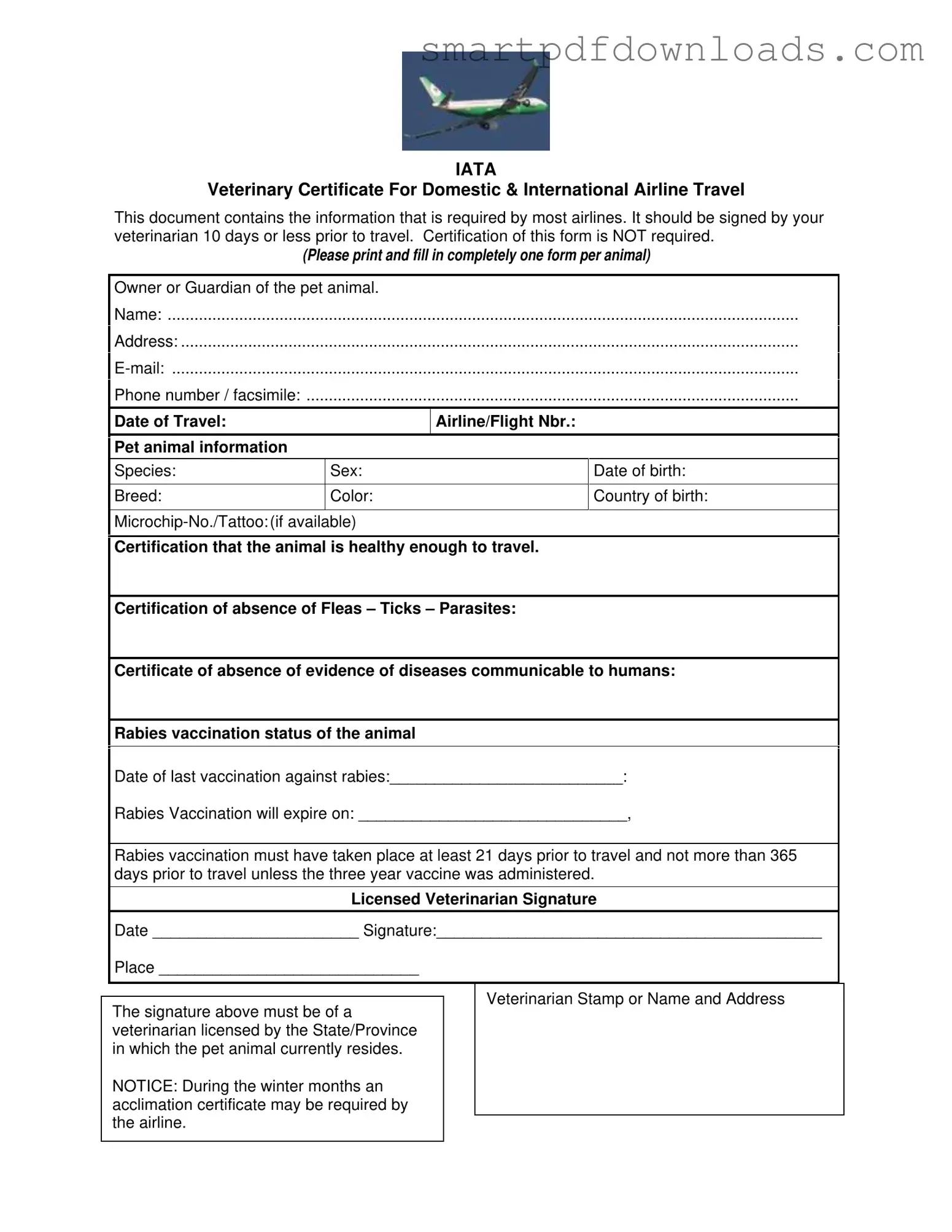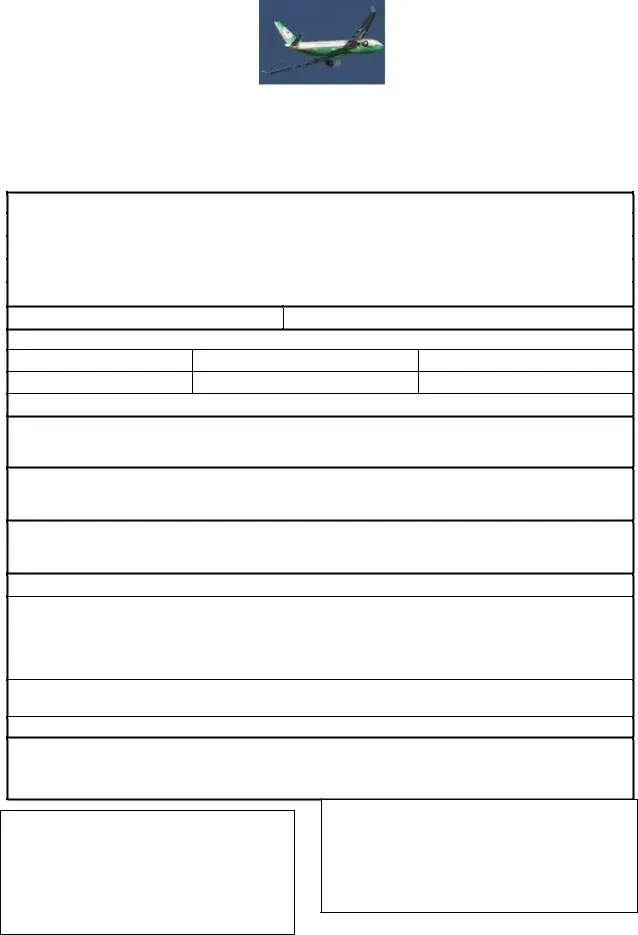IATA
Veterinary Certificate For Domestic & International Airline Travel
This document contains the information that is required by most airlines. It should be signed by your veterinarian 10 days or less prior to travel. Certification of this form is NOT required.
(Please print and fill in completely one form per animal)
Owner or Guardian of the pet animal.
Name: .............................................................................................................................................
Address: ..........................................................................................................................................
E-mail: ............................................................................................................................................
Phone number / facsimile: ..............................................................................................................
Date of Travel:
Pet animal information
Date of birth:
Country of birth:
Microchip-No./Tattoo: (if available)
Certification that the animal is healthy enough to travel.
Certification of absence of Fleas – Ticks – Parasites:
Certificate of absence of evidence of diseases communicable to humans:
Rabies vaccination status of the animal
Date of last vaccination against rabies:__________________________:
Rabies Vaccination will expire on: ______________________________,
Rabies vaccination must have taken place at least 21 days prior to travel and not more than 365 days prior to travel unless the three year vaccine was administered.
Licensed Veterinarian Signature
Date _______________________ Signature:___________________________________________
Place _____________________________
Veterinarian Stamp or Name and Address
The signature above must be of a veterinarian licensed by the State/Province in which the pet animal currently resides.
NOTICE: During the winter months an acclimation certificate may be required by the airline.

